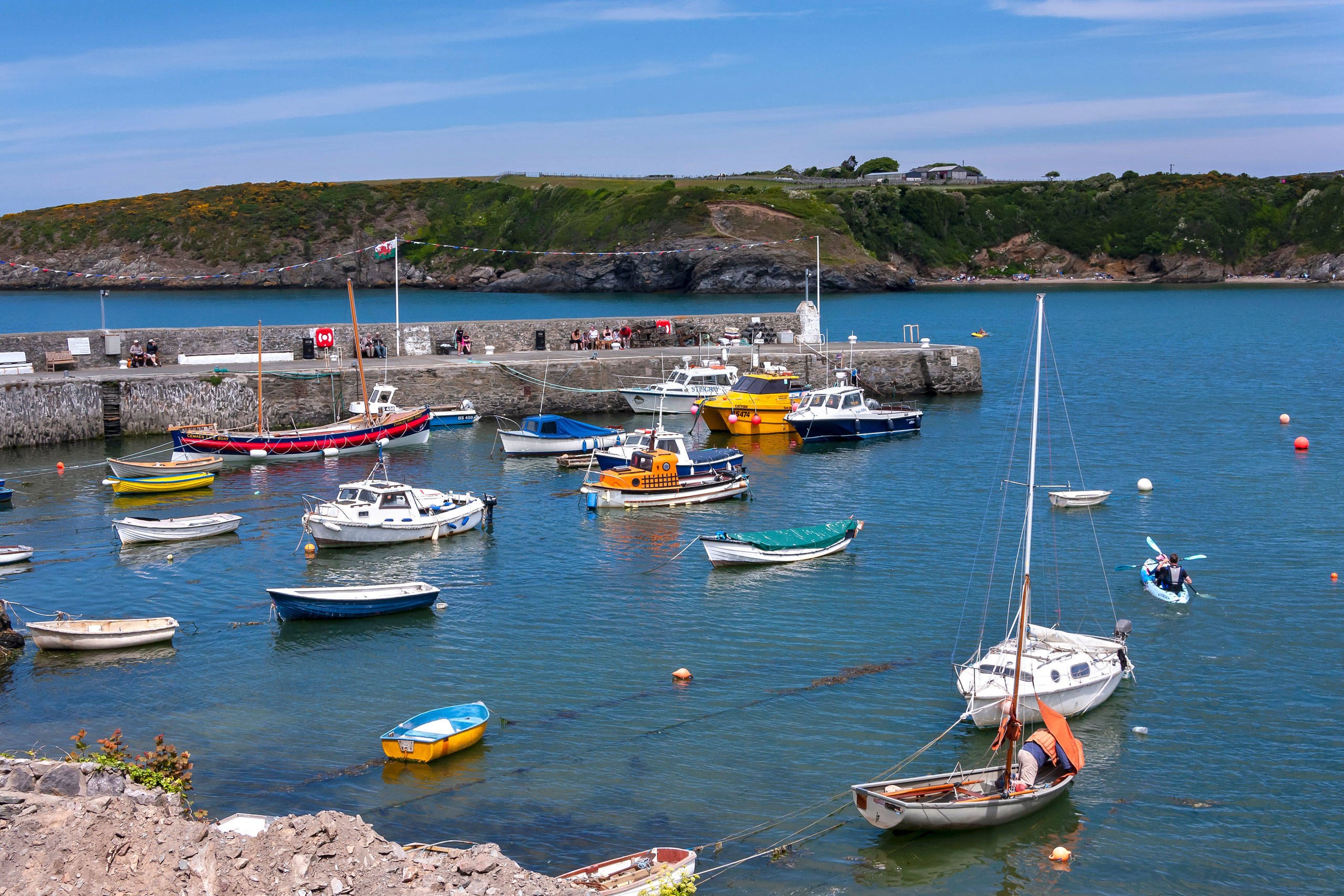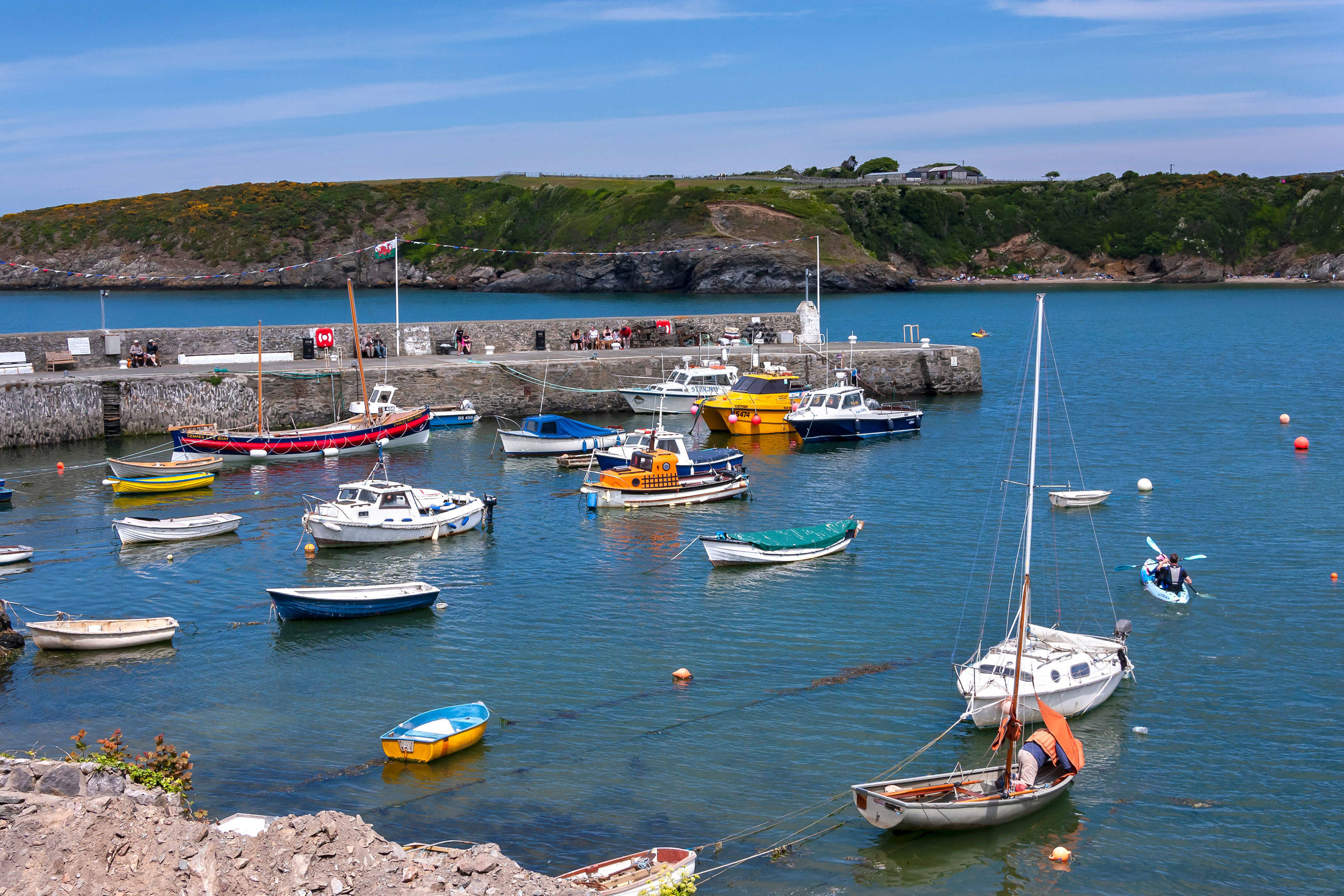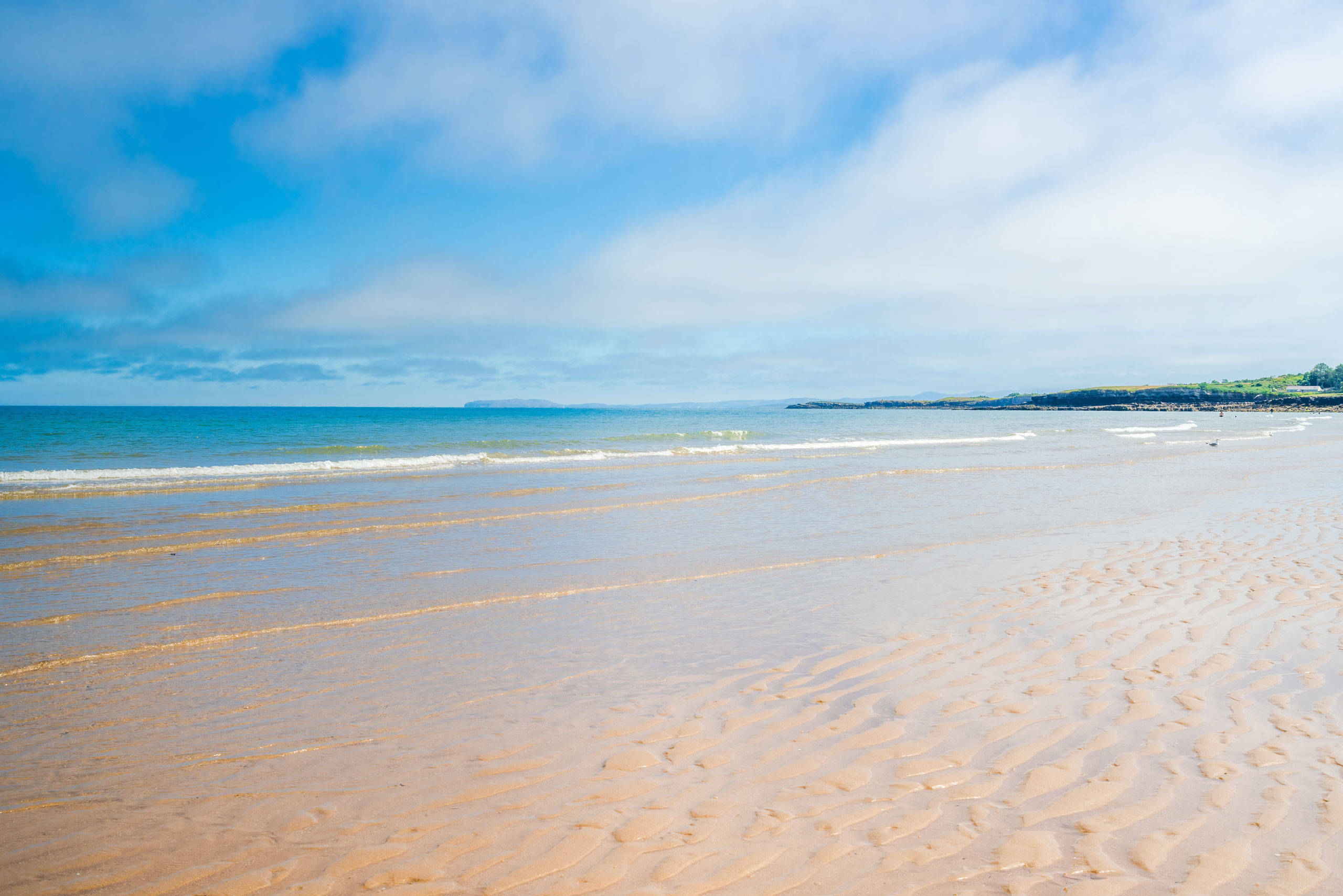Spend the morning exploring Anglesey’s rugged northern coast. Start off from Cemaes, heading east along the A5025. You’re on the way to Porth Wen, where the ghostly remains of a 19th-century brickworks and harbour sit next to a sparkling white shingle beach.
It’s not the easiest place to get to, but well worth the effort. Park in the layby off the A5025 about 1½ miles/2.4km from Cemaes (what3words.com location: opposites.jaundice.balancing) and walk up the lane for half a mile or so before picking up the footpath on your right to the coast, where you’ll find a crumbling complex of chimneys, kilns and works buildings perched above the crashing waves.
After returning to your car, retrace your route on the A5025 back towards Cemaes for a mile or so before turning right to follow the brown signs to Llanbadrig Church, sitting on a blustery headland overlooking Cemaes Bay (there’s a small car park just outside the church).
According to legend, the church was founded in AD440 by St Patrick, who survived a shipwreck here by sheltering in a nearby cave with its own freshwater spring. As well as being the oldest church in Wales, it is also one of the most unusual. The simple stone exterior stands in stark contrast to the interior, which was decorated in vibrant Moorish style in a dramatic late 19th-century renovation.
If you’d prefer to spend less time in the car, you can explore Llanbadrig Church, Porth Wen and host of other north Anglesey landmarks on a lovely circular walk from Cemaes Bay (roughly 5 miles/8km in length).
Then follow the A5025 via Amlwch in the direction of Moelfre for Traeth Lligwy (Lligwy Beach). The beach is on the minor road to your left (at Rhos Lligwy) before you reach Moelfre.


